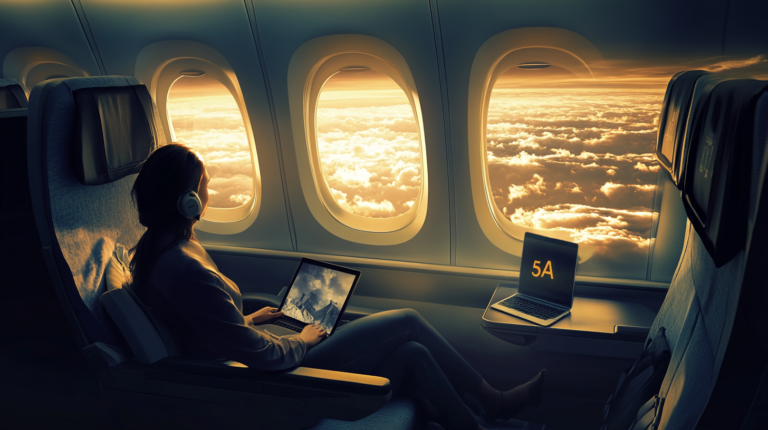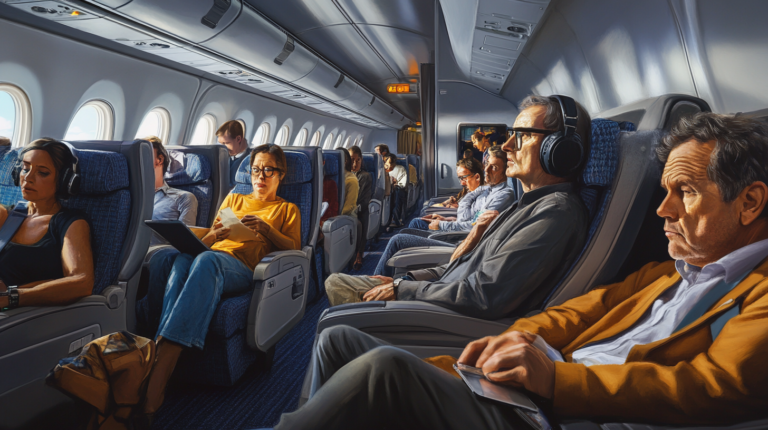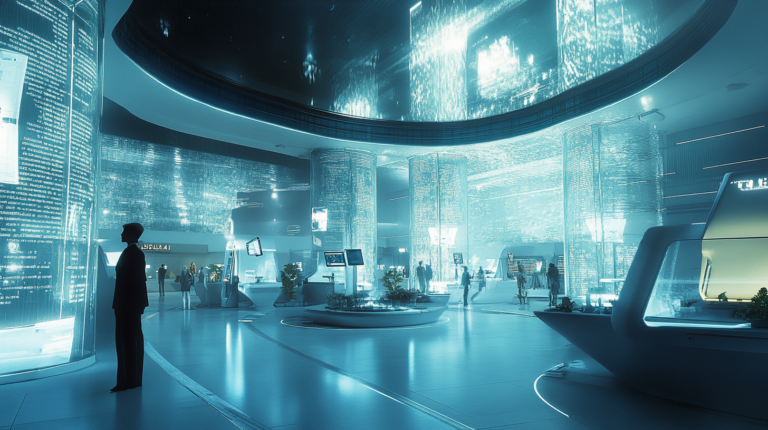Airport Art Installations: Culture at 30,000 Feet
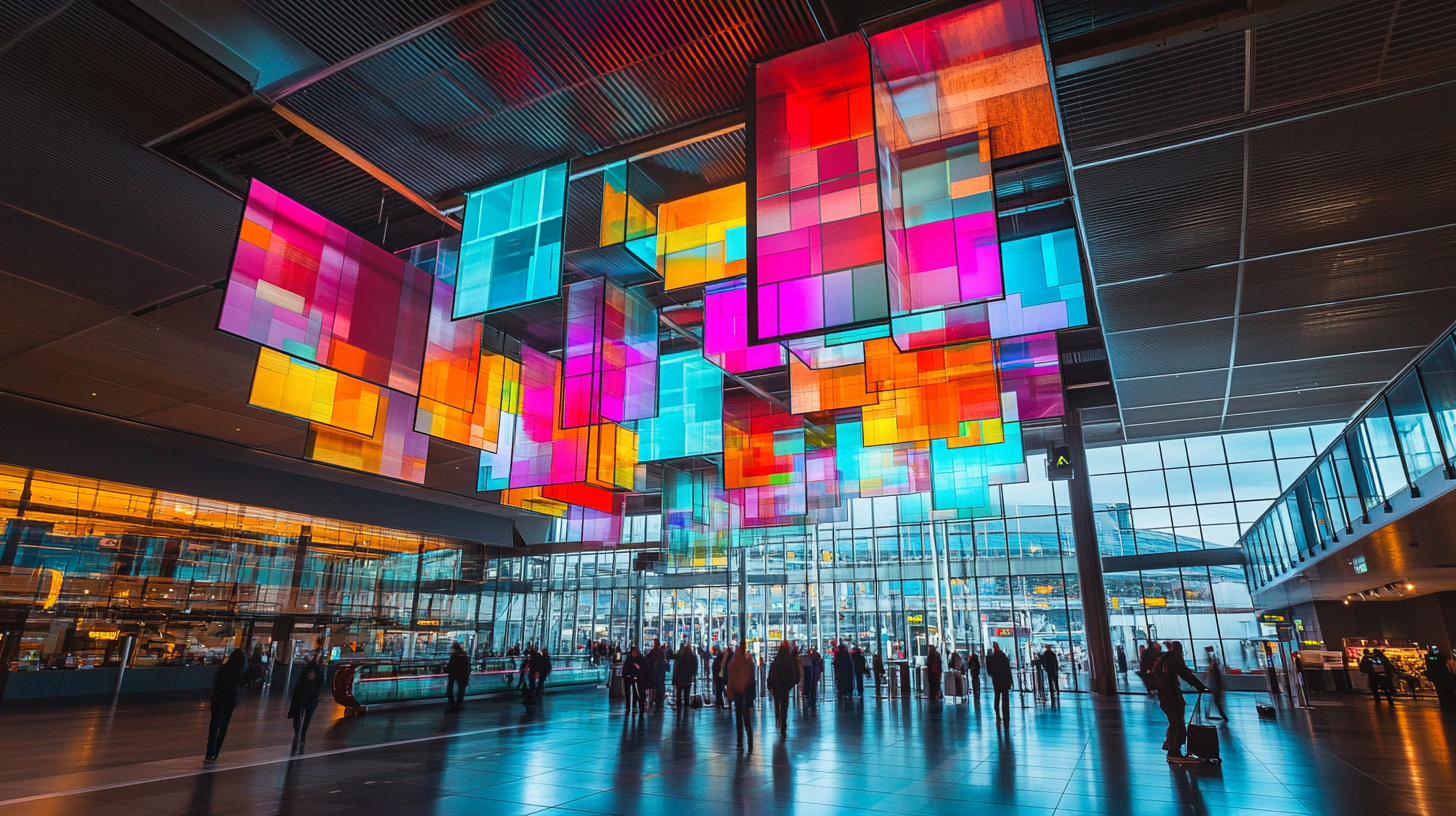
Imagine stepping off a long-haul flight, weary yet filled with anticipation, and being greeted not by monotonous walls but by a breathtaking mural that captures the essence of the destination you’re about to explore. The journey through an airport often serves as a prelude to the adventure that awaits travelers. In recent years, airports around the world have elevated this experience by transforming their terminals into vibrant galleries of art and culture. From colossal sculptures that defy gravity to immersive multimedia displays that engage all the senses, these art installations not only enhance the aesthetic appeal of airports but also reflect the local culture, providing passengers with a unique cultural immersion even before they set foot outside the terminal.
The Rise of Airport Art Installations
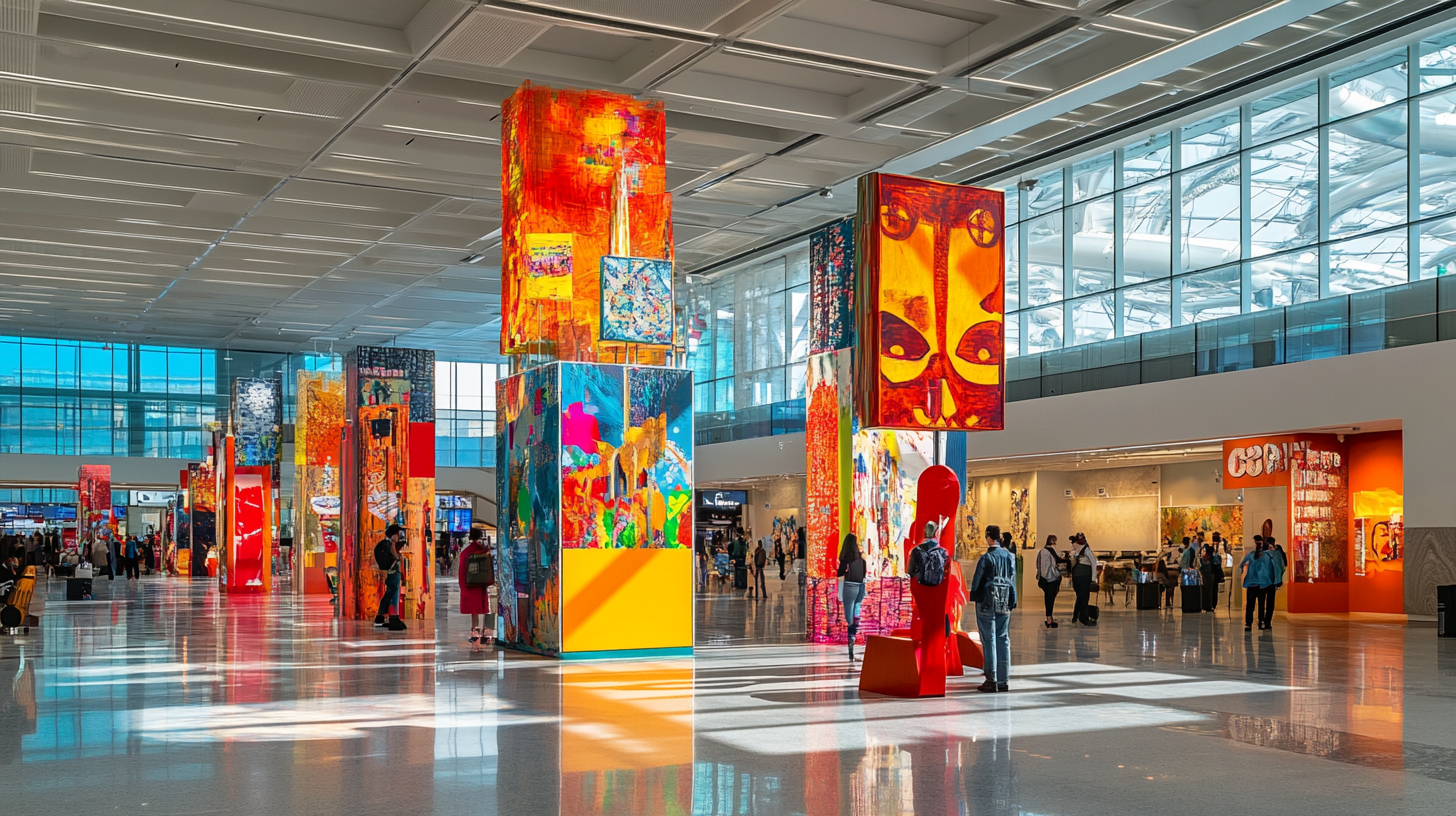
Throughout the latter part of the 20th century, particularly during the 1990s, the aviation industry witnessed an unprecedented surge in global travel. This boom prompted airports to rethink the passenger experience, leading to significant investments in infrastructure and amenities. Airports began to evolve from mere transit hubs into destinations in their own right, recognizing that enhancing the environment could greatly impact traveler satisfaction.
While the COVID-19 pandemic temporarily halted many airport projects, it also provided an unexpected opportunity for introspection and innovation. Airports around the globe seized this moment to focus on expansion and enhancement, particularly in the realm of art. Recognizing that incorporating art installations could transform the often mundane waiting areas into spaces of inspiration and engagement, airports invested in creative endeavors that would not only beautify the space but also offer deeper value to passengers.
Enhancing the Travel Experience
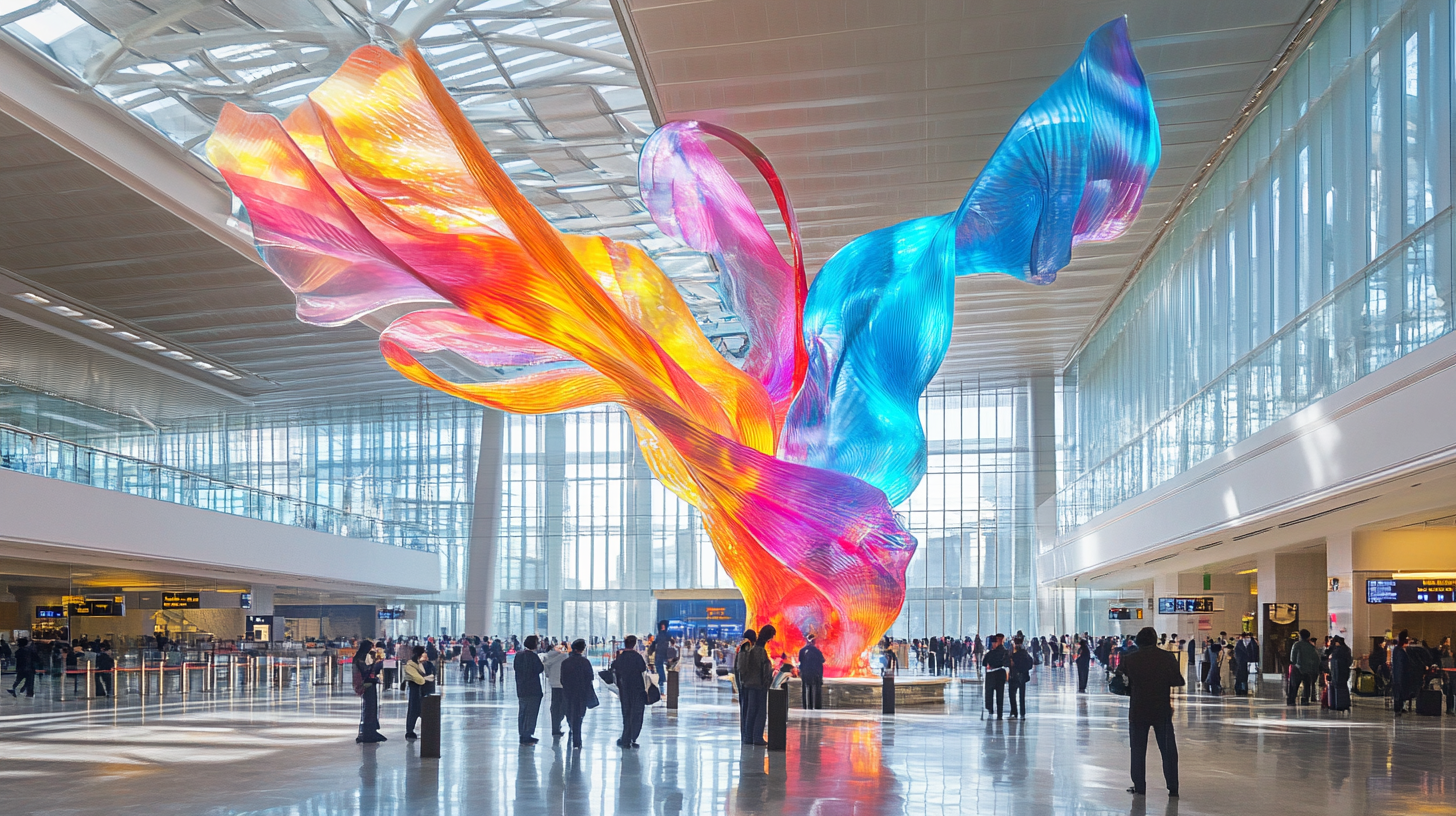
Art installations in airports serve multiple purposes beyond mere decoration. They act as cultural ambassadors, showcase local heritage, and offer comfort and entertainment to anxious or weary travelers. For instance, a stunning sculpture or a thought-provoking piece can provide a delightful distraction, turning moments of waiting into opportunities for reflection and wonder. Moreover, interactive art can engage travelers, inviting them to become a part of the creative experience.
Studies indicate that approximately 60-80% of travelers find that these artistic displays enhance their airport experience, increasing overall satisfaction and even fostering brand loyalty towards the airports and airlines. This positive impact on traveler perception underscores the value of integrating art into airport environments. Airports like Denver International Airport and San Francisco International Airport have invested heavily in art programs, recognizing the role of engaging artistry in elevating the travel experience. These installations evoke emotions, stimulate curiosity, and encourage social interaction among passengers from diverse backgrounds.
Showcasing Local Culture Through Art
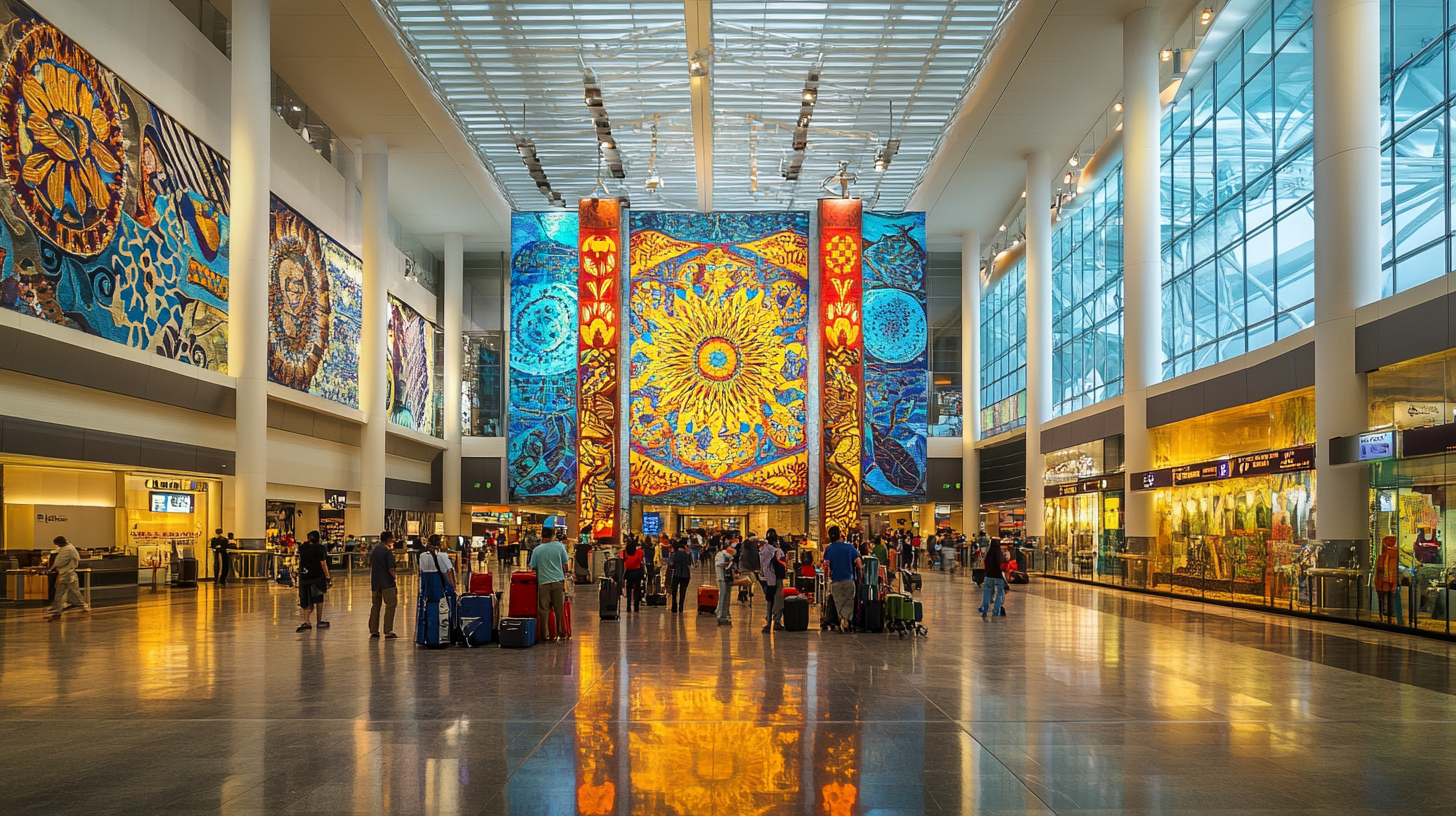
An essential aspect of airport art installations is their ability to reflect and celebrate local culture, providing travelers with an authentic glimpse into the region’s heritage and artistic expression. Many airports prioritize showcasing the unique elements of their locale, turning terminals into cultural touchstones that resonate with both visitors and locals alike.
Salt Lake City International Airport invested $40 million in installations like “The Canyon” and “The Peaks,” large-scale pieces that mirror Utah’s natural beauty. “The Canyon,” for instance, is a monumental representation of the state’s red rock formations, crafted with more than 500 wavy panels that create an immersive landscape within the terminal. Similarly, “The Peaks” features towering structures that echo the silhouettes of the Wasatch Mountains, giving travelers a preview of the stunning vistas that define the region.
Smaller airports also focus on showcasing local charm and regional artists, offering a distinct sense of place. By commissioning works from local artists, these airports not only enhance their spaces but also support the local arts community. This approach transforms airports into galleries that display the creativity and spirit of their surroundings.
At Philadelphia International Airport, travelers can explore 20 rotating exhibits, including the expansive mural “How Philly Moves,” which captures the city’s dynamic spirit through vibrant imagery. This mural spans 85,000 square feet and features over 50 Philadelphians dancing, reflecting the city’s diversity and energy. Such installations provide travelers with a captivating introduction to the local culture, enriching their journey from the moment they arrive.
Global Examples of Airport Art Installations
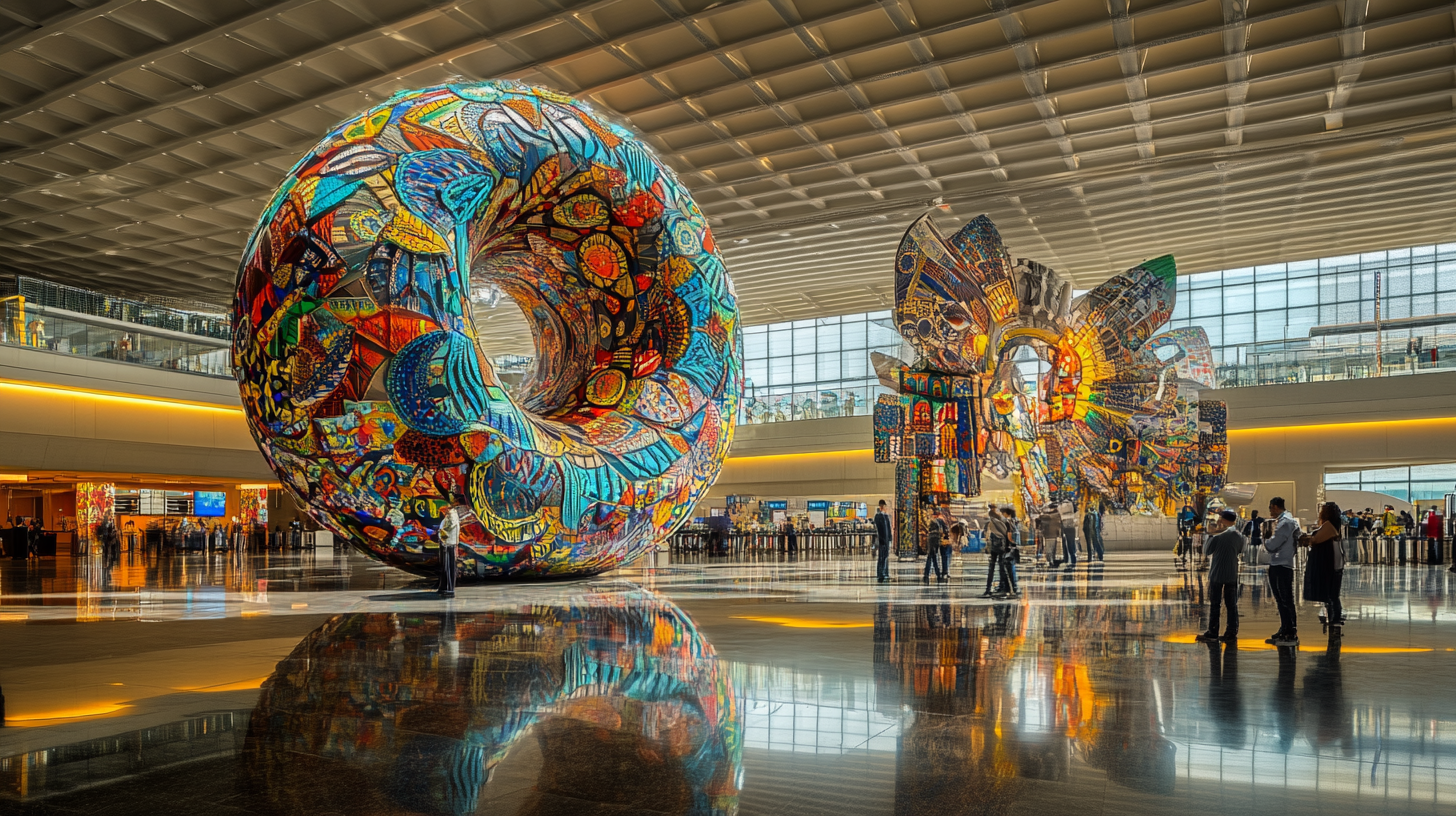
Asia
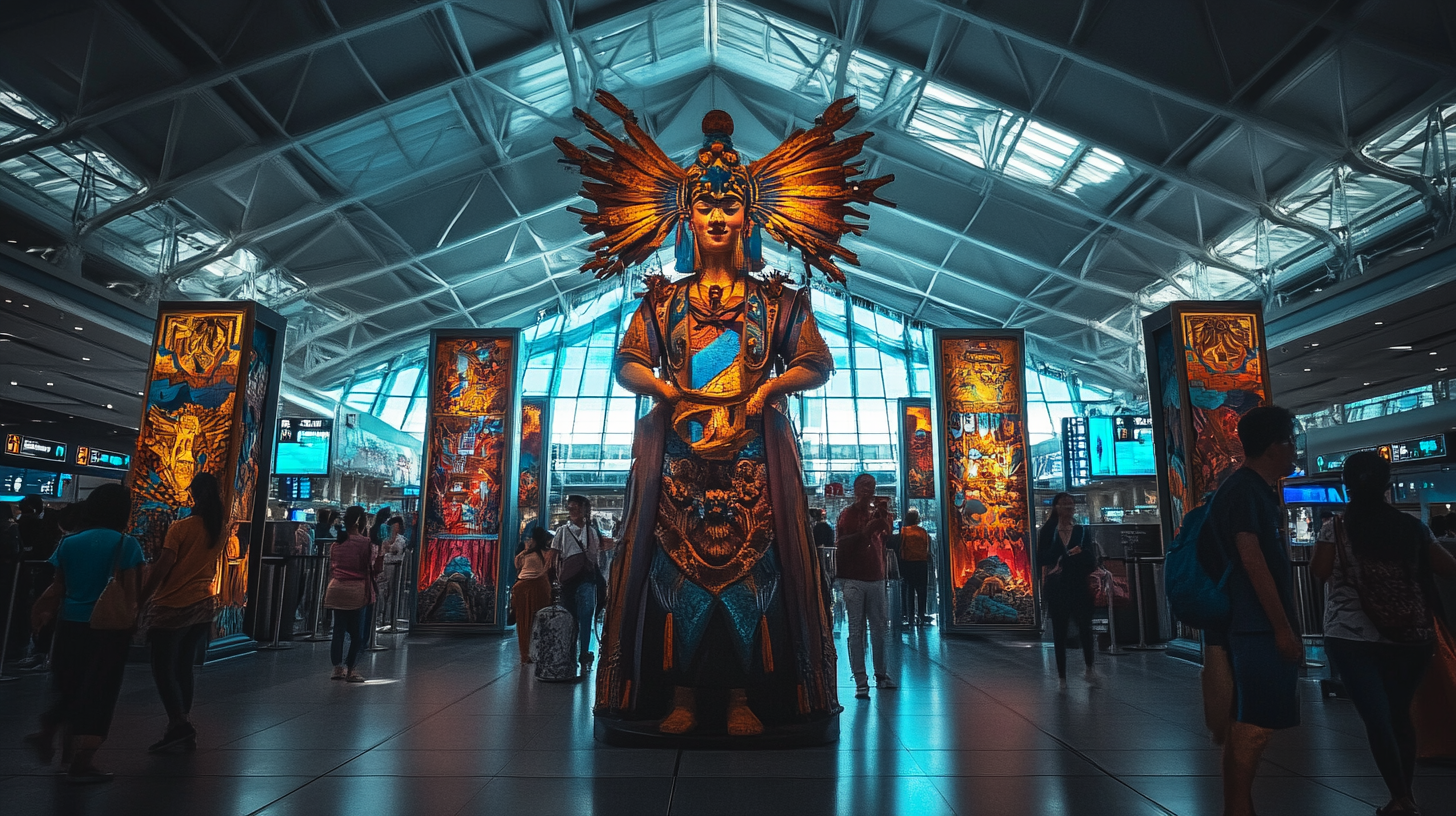
Singapore Changi Airport is renowned for its commitment to integrating nature and art, creating a serene oasis within one of the world’s busiest airports. Terminal 2 features immersive multimedia art aligning with its “Garden City” theme, such as the Enchanted Garden—a sensory experience where motion sensors trigger sounds of nature and blooming flowers. The iconic Kinetic Rain sculpture mesmerizes visitors with 1,216 bronze droplets moving in harmony to create dynamic shapes, from abstract patterns to recognizably Singaporean symbols, offering a meditative spectacle that soothes and inspires.
At Seoul’s Incheon International Airport, a branch of the National Museum of Korea allows travelers to engage with interactive exhibits and classes. Passengers can partake in traditional crafts, try on hanbok (traditional Korean attire), or enjoy live performances of Korean music and dance. This initiative offers a deep dive into Korean history and culture without leaving the airport premises, turning layovers into enriching cultural experiences.
Bengaluru’s Terminal 2 in India features “Bird’s Eye View” by Madhvi Subrahmanian, an installation highlighting global connectivity through intricate designs. The artwork comprises ceramic birds suspended in flight, symbolizing the convergence of technology and nature—a nod to Bengaluru’s status as India’s Silicon Valley. This installation resonates with both local and international travelers, emphasizing the universal themes of progress and interconnectedness.
Delhi’s Indira Gandhi International Airport showcases the stunning “Hands” sculpture, depicting various Indian mudras (hand gestures) significant in Indian dance and culture. These colossal metallic hands adorn the terminal wall, each gesture representing concepts like wisdom, fearlessness, and compassion. The installation welcomes visitors with a touch of traditional artistry, providing a profound connection to India’s cultural heritage right within the airport.
Europe
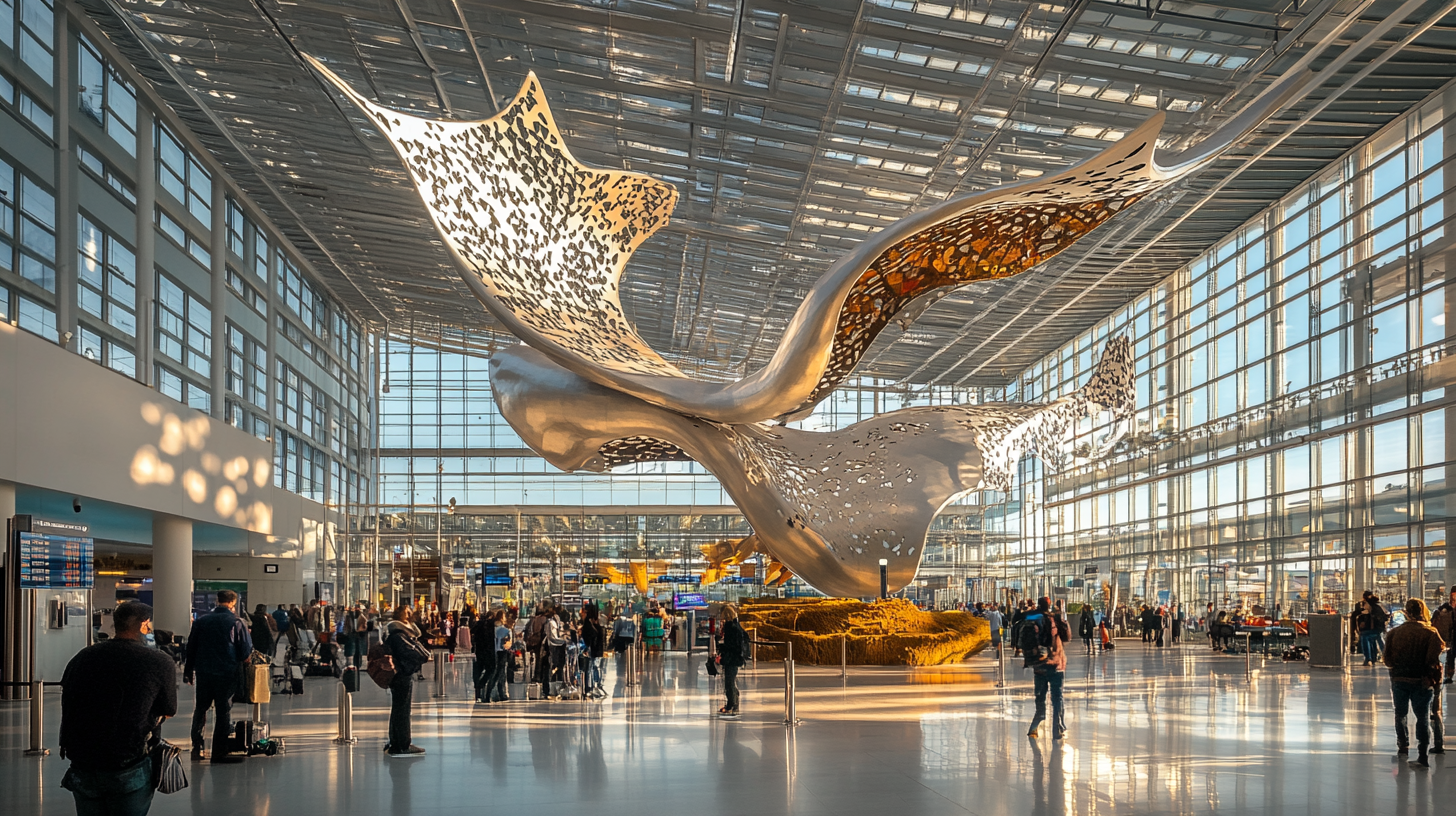
Amsterdam Schiphol Airport houses a satellite of the famed Rijksmuseum, allowing travelers to explore Dutch masterpieces during their journey. The airport museum presents works from the Dutch Golden Age, including pieces by Rembrandt and Vermeer. Rotating exhibitions, such as the exploration of 17th-century Dutch table culture, offer insights into the nation’s history and artistry without leaving the terminal.
In the United Kingdom, London Heathrow Airport captivates passengers with “Slipstream,” a 70-meter-long sculpture by Richard Wilson that captures the dynamic motion of a stunt plane. Suspended above Terminal 2’s atrium, this aluminum installation twists and turns, embodying the exhilaration of flight and seamlessly blending engineering and art. It serves as an awe-inspiring centerpiece that enhances the architectural grandeur of the space.
Copenhagen’s Kastrup Airport underwent transformation by Dutch architects who incorporated site-specific works, turning the airport into a space where functionality meets artistic expression. The integration of art and design elements throughout the terminal creates a cohesive environment that reflects Danish aesthetics and innovation, offering travelers a unique experience that embodies the spirit of Copenhagen.
Middle East
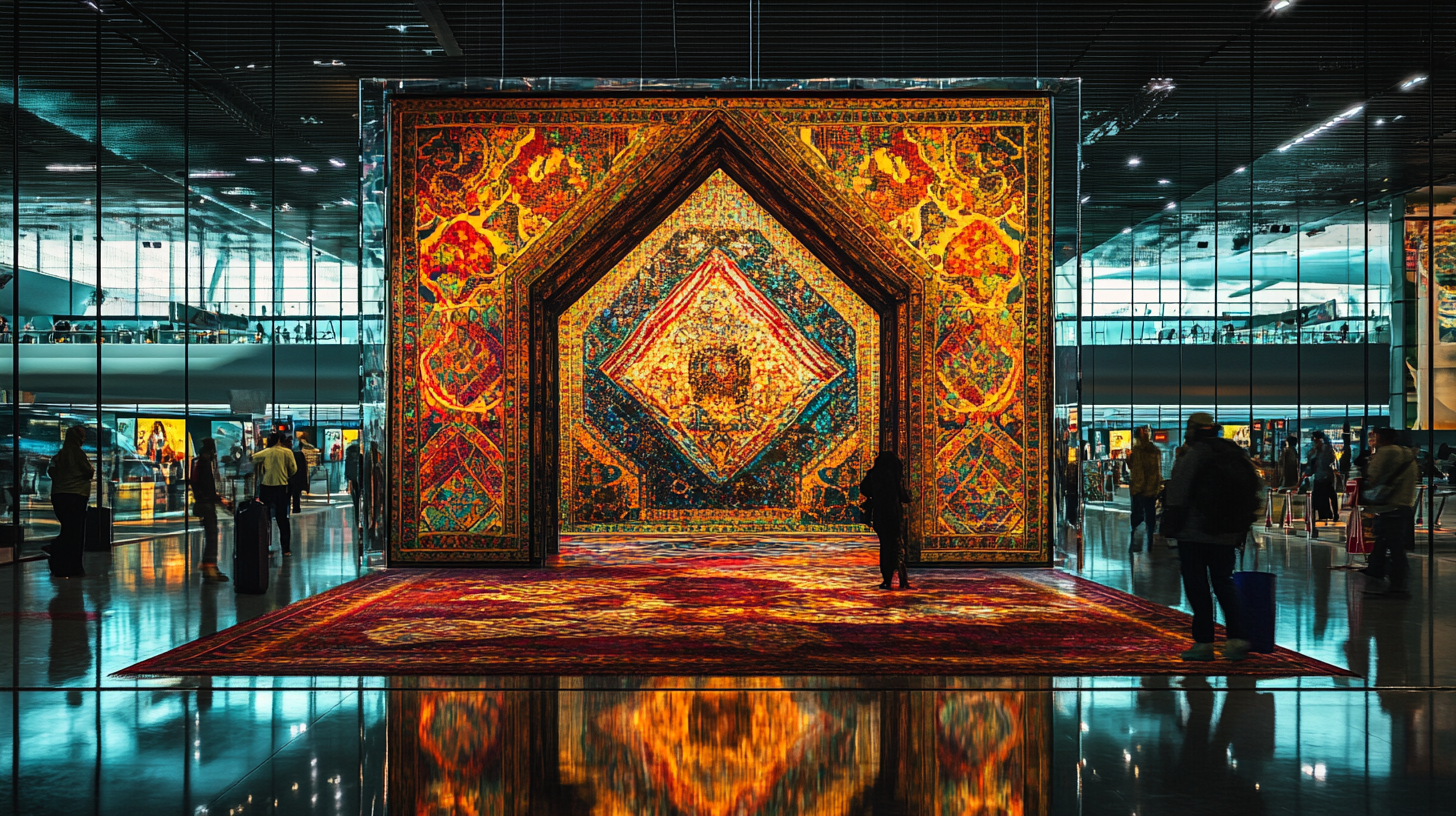
Hamad International Airport in Doha has become a cultural destination in its own right, showcasing an extensive collection of contemporary art. Travelers are greeted by Urs Fischer’s “Lamp Bear,” a whimsical 23-foot-tall yellow teddy bear sculpture nestled under a lamp, evoking childhood nostalgia amidst the modern setting. The airport also features “Small Lie” by KAWS, a 30-foot sculpture that adds to the eclectic mix of artwork on display. These installations contribute to an atmosphere where art and travel intersect, enriching the passenger experience.
North America
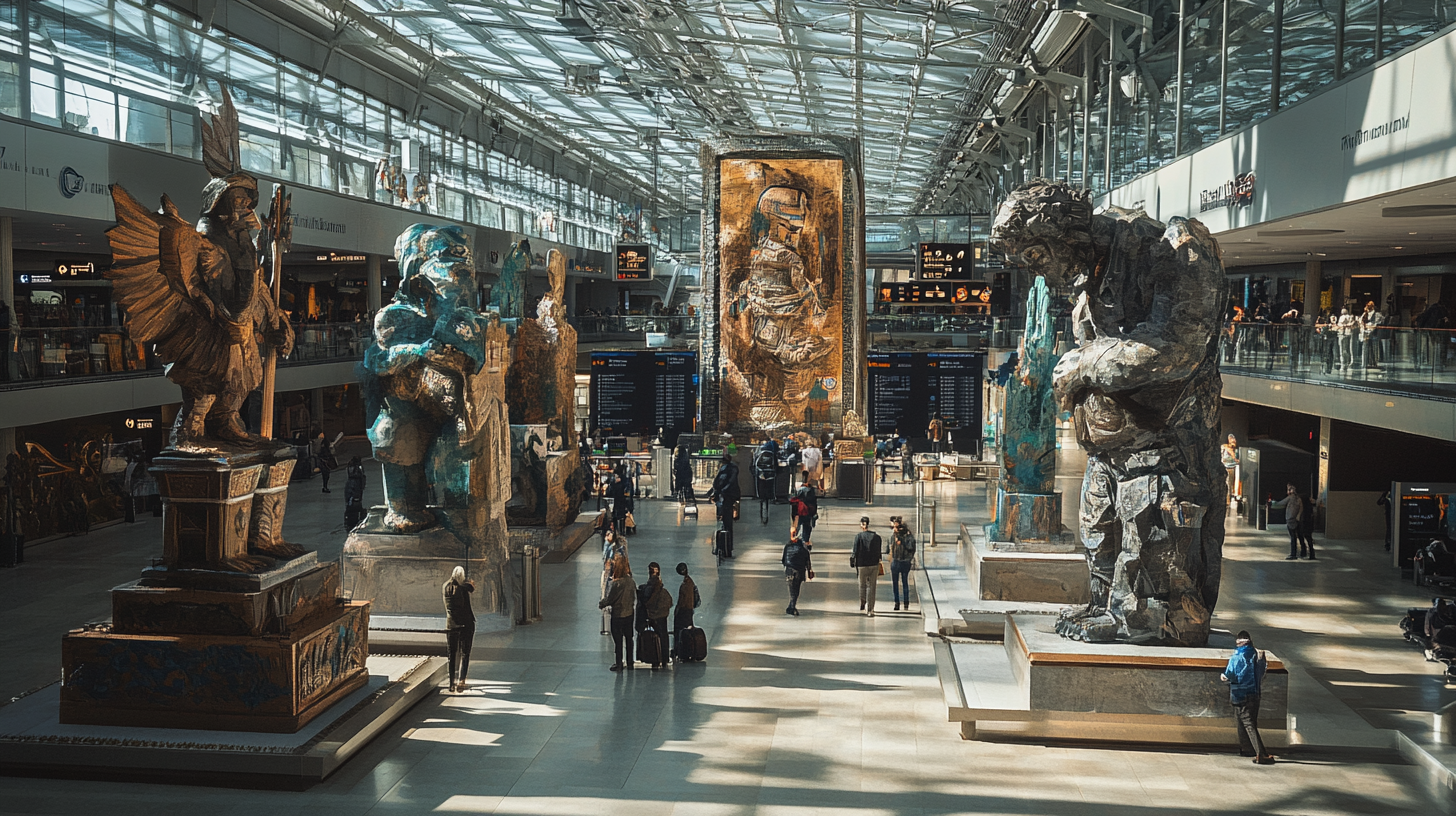
In the United States, airports are embracing art to significantly enhance the passenger experience. Denver International Airport is home to Luis Jimenez’s “Mustang,” a striking blue horse sculpture with glowing red eyes that makes a bold statement against the Colorado skyline. This imposing figure, often referred to as “Blucifer” by locals, has become an iconic symbol of the airport, sparking conversation and intrigue among travelers.
Dallas/Fort Worth International Airport features the Nasher Sculpture Garden and large-scale installations like “Crystal Mountain,” providing a serene escape within the bustling terminal. The sculpture garden showcases works by renowned artists, offering a tranquil environment where passengers can relax and reflect amid art and greenery.
Chicago O’Hare International Airport delights travelers with Michael Hayden’s kinetic light sculpture, “Sky’s the Limit,” an underground walkway illuminated with vibrant neon lights synchronized with music. This immersive installation transforms the transit space into a sensory experience, making the journey between terminals both memorable and enjoyable.
San Francisco International Airport integrates public art throughout its terminals, including the “Sky” installation of mirrored spheres that reflect and distort the surroundings. This playful visual experience engages passengers, inviting them to see the familiar environment from new perspectives and adding an element of discovery to their travel.
Transforming Airports into Cultural Hubs
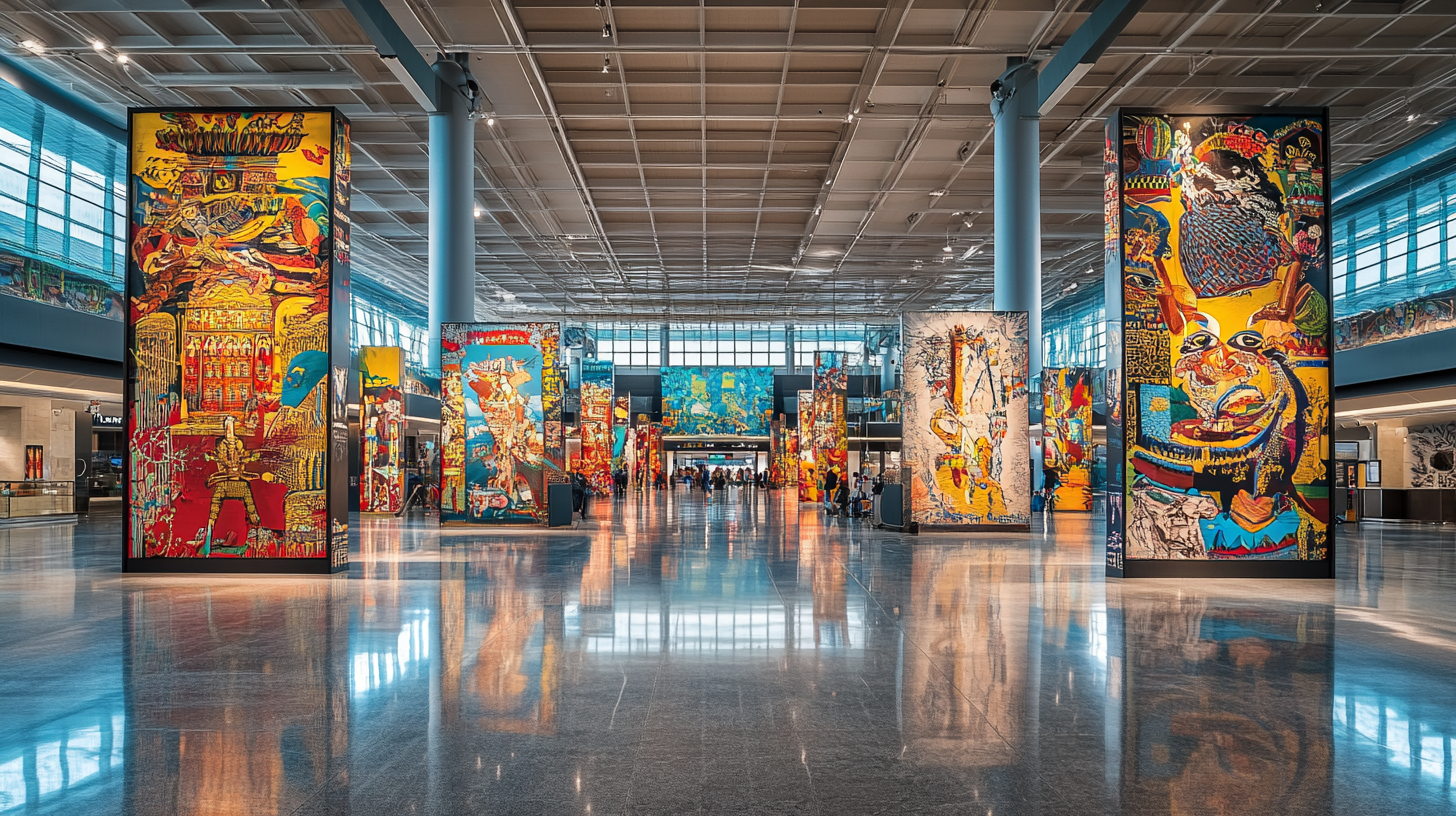
Airports are no longer just transit points but are evolving into cultural hubs that celebrate local artistry and traditions. Istanbul Airport opened a museum within its terminal, offering exhibitions that delve into historical and contemporary Turkish art. By bringing cultural institutions into the airport, travelers have the opportunity to engage with the country’s heritage during their journey.
These cultural investments benefit both the airports and the local arts communities. By collaborating with cultural institutions, airports provide platforms for artists to reach a global audience while enriching the travel experience. Art installations aid in navigation, offer comfort, and provide content that travelers are eager to share on social media, enhancing the airports’ global image and turning them into destinations worth exploring in themselves.
The Future of Airport Art
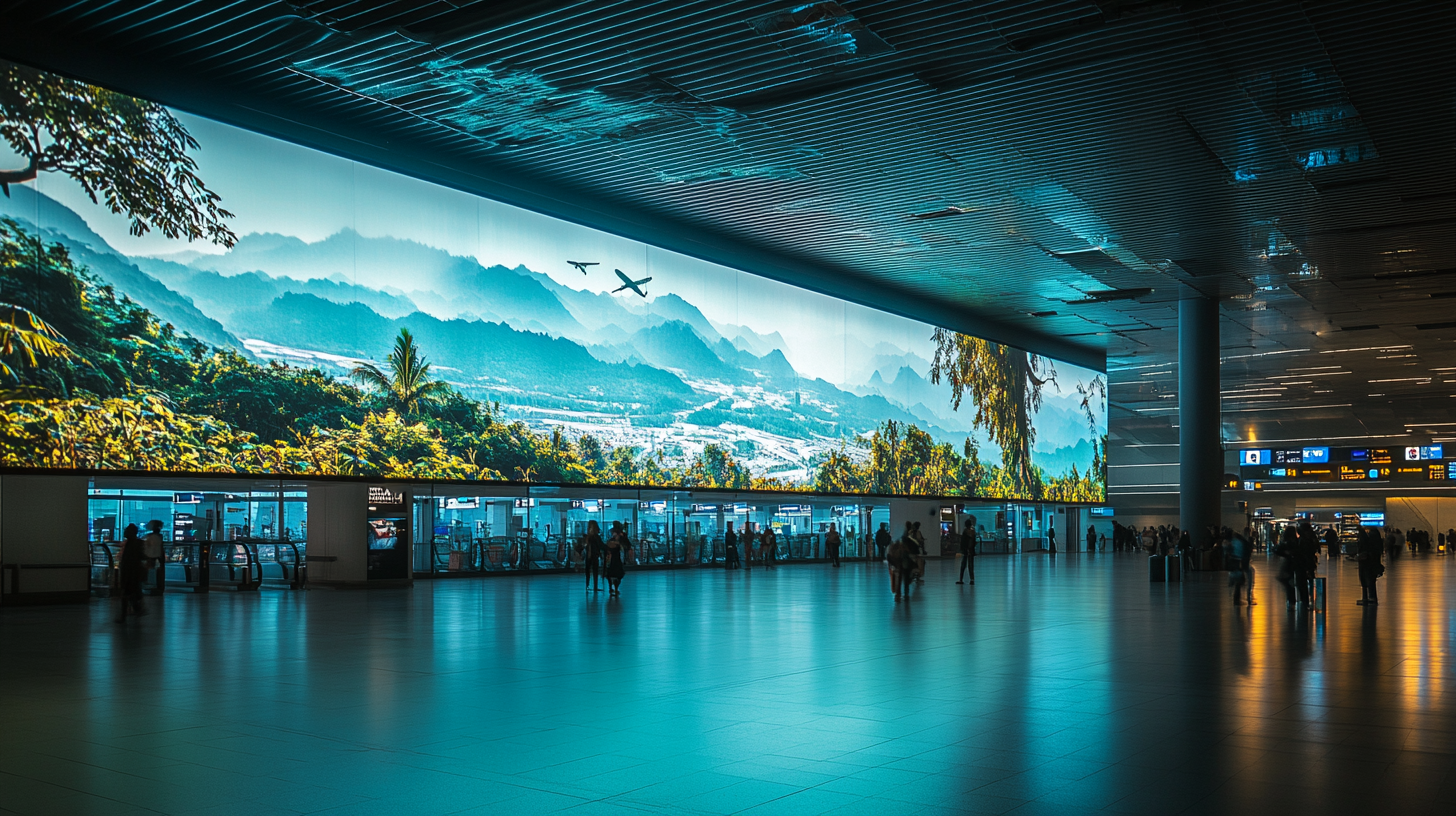
The trend of integrating art into airport design shows no signs of slowing down. As airports continue to compete for passenger loyalty, art installations serve as distinguishing features that enhance satisfaction and leave lasting impressions. Investing in art reflects a commitment to passenger well-being and cultural promotion, transforming airports into destinations worth exploring, even for those who aren’t catching a flight.
The incorporation of art also supports the local economy by showcasing regional artists and artisans. It’s a symbiotic relationship where the airport gains a unique aesthetic, and artists gain exposure to an international audience. As technology advances, we can anticipate more interactive and immersive installations that blend digital innovation with artistic expression, further enriching the traveler’s experience.
Final Thoughts
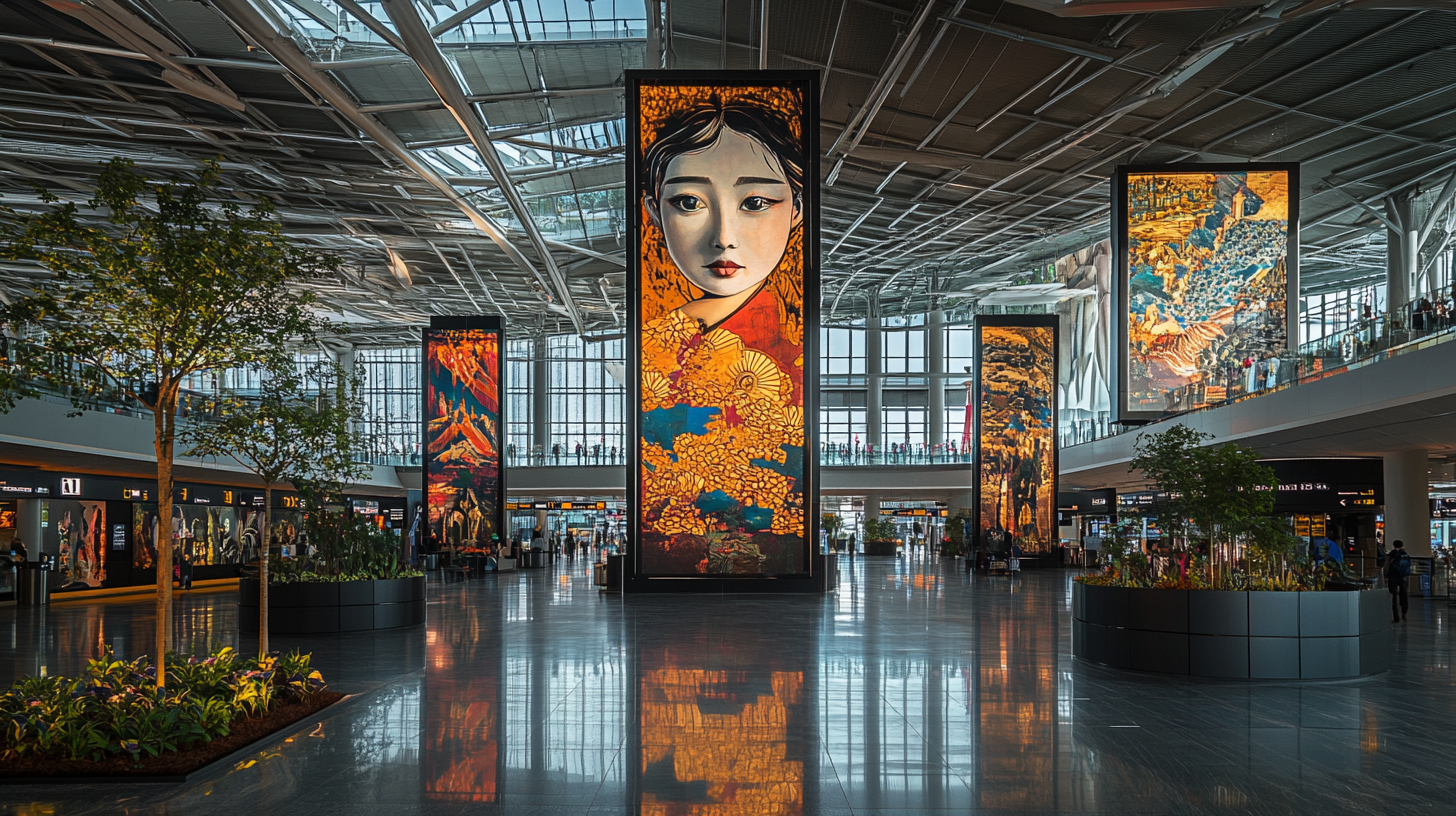
Art installations in airports around the world have redefined the travel experience, turning transit spaces into places of wonder, reflection, and cultural exchange. From colossal sculptures that capture the imagination to interactive exhibits that educate and entertain, these artistic endeavors enrich journeys and create memorable moments.
As airports continue to embrace art, travelers can look forward to experiences that inspire and connect them to the heart of the places they visit, all before their flights even take off. Follow us back to Seat 5A for more insights and stories.



